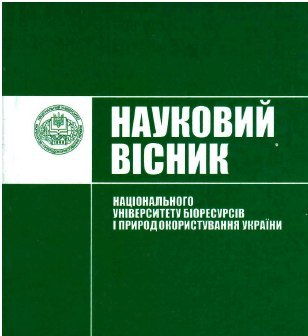Diplomatic peculiarities as a vatiety of official and business style
DOI:
https://doi.org/10.31548/philolog0(263).2017.050%20-%2056Abstract
This article contains the analysis of major aspects of International Relations and Diplomatic Intercourse language, its specific stylistic peculiarities as the official style in the context of Communicative Linguistics modern achievements. It proves the fact that the relevant direction of Ukrainian Linguistics is the study of the diplomatic relations language, its formation and development, creation of its social and political dictionary, lexical and phraseological units of the official style. Diplomatic stylistic peculiarities research is one of the key point since international documents and diplomatic correspondence have specific diplomatic, international law and international economic terminology, a number of well-established words and word combinations. Text translation with the observance of the main stylistic features of legislative, diplomatic, political and economic character is also one of the most important problems arising in the text translating process.
The aim of the article is to investigate and find out the stylistic peculiarities of the International Relations and Diplomatic Discourse text translation, consider the main aspects of the research according to the language stylistics rules on the basis of the diplomatic substyle study, define the correlation between the original text and the final product of translation, as well as the variety of forms needed to acquire the full contextual identity.
Diplomatic substyle of the official style is generally used in the field of interstate official relations in politics, economy, culture, it regulates the official-relationships of international organizations, institutions, individual citizens and is implemented in conventions (international agreements), communiqué (messages), diplomatic exchanges (requests), protocols, memorandums, agreements, statements, ultimatum. The most notable and frequently used type of diplomatic language genres is diplomatic correspondence (personal notes, verbal notes, memorable notes, memoranda,etc
The article proves that the major diplomatic stylistic peculiarities are language clarity, evasive statements, expressions of respect, protocol courtesy formulas, etiquette, modal tonality, stable expressions, standardized presentation, maximum brevity, succinctness, no cuts, "political discourse".
References
Kaliuzhnaia, V. V. (1982). Stil angloiazychnykh dokumentov mezhdunarodnykh orhanyzatsyi [International organizations English-language documents style]. Kyiv : Naukova dumka, 122.
Kunch, Z. (2014). Osoblyvosti dyplomatychnoho movlennia iak riznovydu ofitsiino-dilovoho styliu [Diplomatic peculiarities as the official style]. Available at http://ena.lp.edu.ua:8080/bitstream/ntb/24521/1/21-121-127.pdf
Matsko, О. М. (2001). Movni formuly u dyplomatychnykh tekstakh suchasnoi ukrainskoi movy (funktsionalno-stylistychnyi analiz) [Diplomatic language formulas in modern Ukrainian language: functional and stylistic analysis]. Kyiv, 19.
Pazynych, О. М. (2001). Funktsionalno-strukturni osoblyvosti tekstiv dyplomatychnoho lystuvannia [Functional and stylistic peculiarities of diplomatic correspondence]. Kyiv, 16.
Teleky, M. M., Shynkaruk, V. D. Sotsialni katehorii modusu v tekstakh epistoliarnoho zhanru : monohrafiia [Social categories of modus in the texts of the epistolary genre].– Kyiv-Mykolaiv : Vyd-vo MDHU im. Petra Mohyly, 2007. – 176 s.
Shynkarenko, T. I., Humeniuk A. H., Kovtun O. Ju. (2009). Mova dyplomatychnykh dokumentiv [Language of diplomatic documents]. Kyiv : Kyivskyi universytet, 112.
Borisenko I. I., Yevtushenko L. I., Daineko V. V. (1999). English in International Documents and Diplomatic Correspondence. Kyiv: Logos, 343.
Downloads
Published
Issue
Section
License
Relationship between right holders and users shall be governed by the terms of the license Creative Commons Attribution – non-commercial – Distribution On Same Conditions 4.0 international (CC BY-NC-SA 4.0):https://creativecommons.org/licenses/by-nc-sa/4.0/deed.uk
Authors who publish with this journal agree to the following terms:
- Authors retain copyright and grant the journal right of first publication with the work simultaneously licensed under a Creative Commons Attribution License that allows others to share the work with an acknowledgement of the work's authorship and initial publication in this journal.
- Authors are able to enter into separate, additional contractual arrangements for the non-exclusive distribution of the journal's published version of the work (e.g., post it to an institutional repository or publish it in a book), with an acknowledgement of its initial publication in this journal.
- Authors are permitted and encouraged to post their work online (e.g., in institutional repositories or on their website) prior to and during the submission process, as it can lead to productive exchanges, as well as earlier and greater citation of published work (See The Effect of Open Access).

